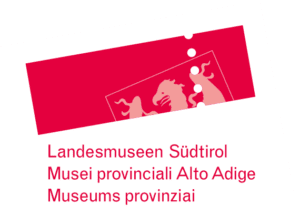Sharing
For different groups to be able to live happily together, no one should feel at a disadvantage.
Since 1976 South Tyrolean autonomy has had a mechanism to address this issue: ethnic proportionality. Public sector jobs, many political posts and part of the provincial budget are assigned in proportion to the size of the three language groups.
If you live in South Tyrol, you have to declare for one of the three official language groups. The current strength of the three groups is 69 % German, 26 % Italian and 5 % Ladin. Each group consequently gets a corresponding percentage of public sector posts, cultural funding and housing subsidies. Needs are however also taken into account. But what about those who are equally at home in two languages? And what about those who come from elsewhere? For those who cannot or will not opt for one of the three official language groups, there is now a fourth group to choose from: “Others”. But, for the purposes of ethnic proportionality, such persons too have to “assign” themselves to one of the three groups.
Do you think that proportionality is the best solution for the peaceful coexistence of the language groups?
How does proportionality
affect public sector posts?
After 1919, and especially during the Fascist era, large numbers of Italians migrate to South Tyrol. Most of the jobs in the public sector and housing subsidies now go to Italian speakers. Only in 1972, with the new Autonomy Statute, will this situation change.
Ethnic proportionality, introduced in 1976, seeks a fairer distribution of public sector posts according to the size of each language group. In order to achieve this goal as soon as possible, the Italian language group is allocated only a few government posts in the first years.
1975
Language group declaration
Population census 1971 / Astat
33,3%
137.759 people
63%
260.351 people
3,7%
15.456 people
1975
Public sector posts
Astatti sin dall’inizio in base alle disposizioni sulla proporzionale.
86,1%
5.108 people
13,9%
824 people
Data on some occupational groups, such as teachers, were not listed in terms of proportionality in 1975.
Local authority data are missing. Jobs in the local administration were from the outset allocated in accordance with the requirements of proportionality.
5.108 persone
2019
Language group declaration
Population census 2011 / Astat
26,1%
118.120 people
69,4%
314.604 people
4,5%
20.548 people
2019
Public sector posts and local authorities
Astat
27,3%
12.252 people
69,3%
31.078 people
3,4%
1.541
2019
Today, local government has a significantly larger presence than that of the central authorities.
The number of central government posts has decreased significantly since 1972 owing to privatisation and transfer of competencies to the Province. In addition, data on certain occupational groups, e.g. teachers, were not listed according to proportionality in 1975 and the local government data from that year are thus missing. Local government jobs were from the outset allocated according to the principle of proportionality. The local administration essentially includes provincial and regional officials, employees of the provincial and regional councils, municipalities, district communities, health authority and social services, teachers and kindergarten staff, employees of the Chamber of Commerce, the Housing Institute, the welfare agencies and the South Tyrol broadcasting authority.
Local authorities
42.792
Astat
%
Public sector posts
2.079
Astat
%
